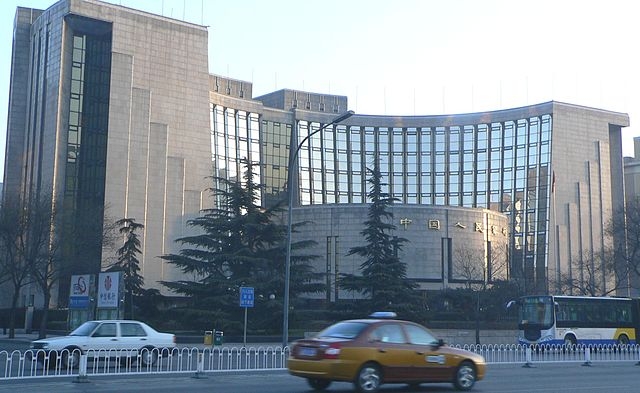People's Bank of China (PBoC) has been easing monetary policy since late 2014 mainly using reserve requirement reduction and reduction in policy rates. It has also announced other policy measures such as LTV ratio to ease pressure in housing market. It has also been injecting cash into banking system via auctions. In latest attempt, PBoC has injected Yuan 600 billion into banking system as weeklong lunar holiday comes close. Last time its reduced rate was back in October last year that marked drop of rates to 4.35% from 65 back in2014.
This three months pause in easing is however, hardly change in stance and we at FxWirePro, believe large chunk of easing are to arrive from PBoC in 2016 and beyond. As of now, probability of a new Chinese quantitative easing is low but not unlikely.
Our theory lies on simple facts -
- According to latest report from Bank of International Settlements (BIS), China's corporate debt stands at $17.3 trillion as of second quarter of 2015.
- Dollar's share is however, relatively low at 5%, which means large chunk of debt is denominated in local currency.
This fact is one of the key reason, why PBoC has been easing since 2014, to reduce the refinancing cost and cost of debt servicing.
Chart from Bloomberg's Chief economist of Asia, Tom Orlik points out that China's debt servicing cost has reached as much as 32% of GDP, from just about 20% back in 2008/09 era. PBoC's easing has prevented the ratio to rise by still by end 2016, stands at 31%.
We, at FxWirePro, believe, China need significant de-leveraging to make debt sustainable, even if it means further slowdown in economy.
So, to ease the pain, PBoC has fewer options but to ease big time.
That in turn not likely to bear well for Yuan as it would reduce investors' appetite to hold Yuan.



 Interest rates: Monetary policy is always political as central banks opt to back the financial sector
Interest rates: Monetary policy is always political as central banks opt to back the financial sector  The Federal Reserve and the art of navigating a soft landing ... when economic data sends mixed signals
The Federal Reserve and the art of navigating a soft landing ... when economic data sends mixed signals  Think the RBA will lift rates on Melbourne Cup day? Don't bet your house on it
Think the RBA will lift rates on Melbourne Cup day? Don't bet your house on it  Why central banks are too powerful and have created our inflation crisis
Why central banks are too powerful and have created our inflation crisis  As treasurer, Bill Hayden set Labor on the path to economic rationalism
As treasurer, Bill Hayden set Labor on the path to economic rationalism  Inflation: raising interest rates was never the right medicine
Inflation: raising interest rates was never the right medicine 































